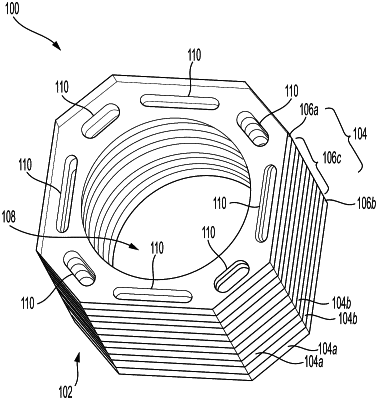| CPC G01R 29/0892 (2013.01) [G01R 29/0885 (2013.01); G01R 33/0052 (2013.01); C03C 27/06 (2013.01)] | 30 Claims |

|
1. A method, comprising:
interacting a beam of light with a vapor in a vapor cell, the vapor cell comprising:
a body defined by a stack of layers comprising electrically conductive layers and electrically insulating layers, the stack of layers bonded to each other and having:
first and second end layers at respective opposite ends of the body, one or both of the first and second end layers being optically transparent,
intermediate layers between the first and second end layers that define an internal cavity of the body, the internal cavity extending through the body between the first and second end layers, and
one or more internal surfaces that bound the internal cavity, at least a portion of the one or more internal surfaces covered by a coating that is chemically inert to the vapor,
wherein adjacent electrically conductive layers are separated by at least one electrically insulating layer, and
wherein each electrically conductive layer defines an electrode of the vapor cell and comprises a contact surface on an exterior side of the body, the contact surface defining an electrical contact of the electrode, and
the vapor, disposed in the internal cavity; and
applying respective voltages to one or more electrodes to alter an electric field in the internal cavity; and
measuring one or both of:
an ion signal based on charged particles in the vapor, and
an optical property of the beam of light after interacting with the vapor.
|